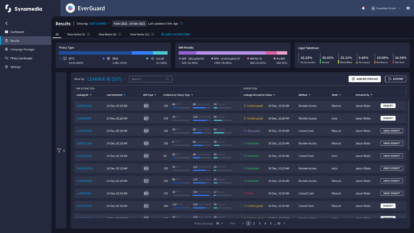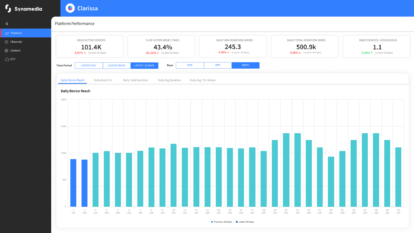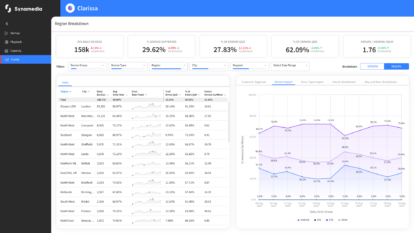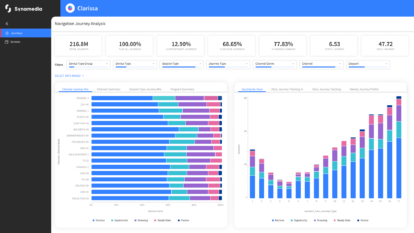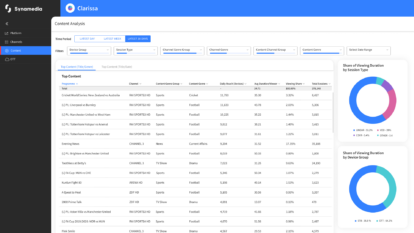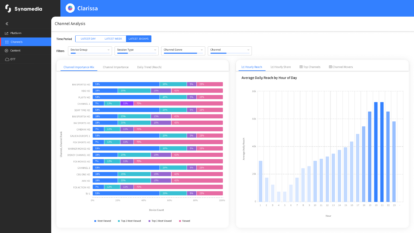If you’re in the business of TV advertising, you’ve probably seen the rapid growth of the Addressable TV Advertising market over the past decade. According to a recent report by Ampere Analysis, the Addressable TV Advertising space is projected to become an $87 billion market by 2027.
As more and more TV advertisers make the addressable switch, we’re helping the industry decode the fundamental aspects of Addressable TV Advertising with our “Demystifying Addressable TV Advertising” webinar series and blogs.
In the first instalment of our blog series, we laid the groundwork for the fundamentals of Server-Side Ad Insertion (SSAI). This instalment will pivot our focus towards integrating SSAI and advanced capabilities that are a crucial part of the larger addressable TV solution for streaming devices.
How do I integrate SSAI into existing streaming systems?
One of the key advantages of SSAI over client-based solutions is the ease with which it can be integrated into other parts of your ad-tech ecosystem. Since most of the interactions are performed in the cloud, there is very little required of the client, and it is much easier to support a multitude of devices with different video codecs, screen resolutions, and processing power.
However, there are some basic technical capabilities that are necessary to deliver a seamless, premium viewing experience across screens and services:
HLS and DASH: The SSAI solution must support these primary streaming formats for broad-based ad insertion on mobile devices, web browsers, Connected TVs, and Set-Top Boxes. Specifically, your streaming packager needs to support file concatenation in its manifest, which is usually referred to as ‘Multi-period’ for DASH and ‘Discontinuity flag’ in HLS.
VOD & Linear: Ad insertion and ad replacement are necessary for SSAI on both VOD and linear. For customers with time-shifted services like Restart or Catchup, these will follow either the VOD or linear model of delivery and hence affect the amount of manifest manipulation required.
Standards-Based: SSAI uses standard protocols for ad request signalling, such as Video Ad Serving Template (VAST) and Video Multiple Ad Playlist (VMAP), as well as for cuing messages, such as SCTE-35 that provide timing for insertion or replacement opportunities. Proprietary approaches are more challenging to integrate and harder to replace in the future.
Multiple Ad Decision Servers: SSAI should be able to integrate with multiple Ad Decision Servers simultaneously by leveraging the industry VAST3 standard. This should also include support for third-party tags for tracking and targeting.
Comprehensive Reporting: In addition to tracking impressions, an SSAI solution should be able to capture viewership quartiles, streaming errors, capacity, and fulfilment. Operators need all this data so they can manage and plan their cloud resources, as well as provide precise measurement and troubleshoot campaign performance. For the efficient handling and analysis of this data, a dedicated client library might be required.
How can I optimise SSAI with advanced features
Beyond the basics, support for these additional features can make for a better performing and more capable SSAI solution:
Dynamic Scale: Content providers that carry high-volume live-streaming events require an SSAI solution that can handle the load without breaking the service. Linear content is inherently more challenging due to the peaky nature of the traffic, with spikes in concurrency at the top and bottom of the hour. Also, the manifest must be continually updated during a linear session, as opposed to a single ad request for a VOD session.
Just-in-Time Transcoding: A key part of ensuring a seamless viewing experience is by closely matching ad formats, bitrates, and resolution to the content stream where it will appear. Just-in-Time transcoding the ad creative greatly reduces the burden of storing all the variations that might be required.
Support for IAB Open Measurement: An SSAI solution that supports IAB OM-compliant clients provides greater transparency for advertisers looking for ad verification and viewability.
Support for both spot and break ad replacement: Depending on your service, the SSAI solution will need to be able to not only insert ads, but also replace existing ones at a break or spot level.
Automated Resiliency and Robustness: If the content is of high value, then support for resiliency and robustness is also a necessary feature. This means supporting diverse deployment models, dynamic scaling, workflow redundancy, and smart failover mechanisms.
What role does Synamedia Iris SSAI play?
Implementing a new technology, upgrading an existing platform, or researching alternatives may appear to be a daunting task, but this is exactly where Synamedia Iris can help.
Synamedia Iris serves as a comprehensive suite of solutions for video content providers looking to enhance their targeted advertising strategies and create or expand their revenue streams.
The Synamedia Iris SSAI solution is designed to support massive scale at low cost, by efficiently utilising cloud resources, as well as eliminating the need for costly and performance-burdening databases. Our SSAI can also deliver seamless replacement for both spots and breaks, as well as linear, VOD, and TSTV sessions, giving you the flexibility to cover all your use cases with one platform.
To delve deeper into SSAI and Synamedia Iris, watch the on-demand webinar now and share your insights here.
About the Author
Tzvi Gerstl is responsible for R&D for products, services, and technologies across Synamedia’s Media Cloud Services and Broadcast Technology Businesses. A member of the Synamedia Executive Leadership Team, Tzvi is also leads enterprise IT, business applications, and operational and product security.
With 20 years of experience in the video industry, Tzvi is a dynamic and energetic leader with extensive knowledge of technology and experience in running large-scale development programmes for innovative market-leading solutions.
Tzvi holds a PhD in Scheduling Algorithms, has authored more than 25 papers on algorithms in high-ranked journals and is the holder of several patents. He is a Dean Fellow at the Business School of the Hebrew University of Jerusalem. In his free time, Tzvi enjoys running and reading.

